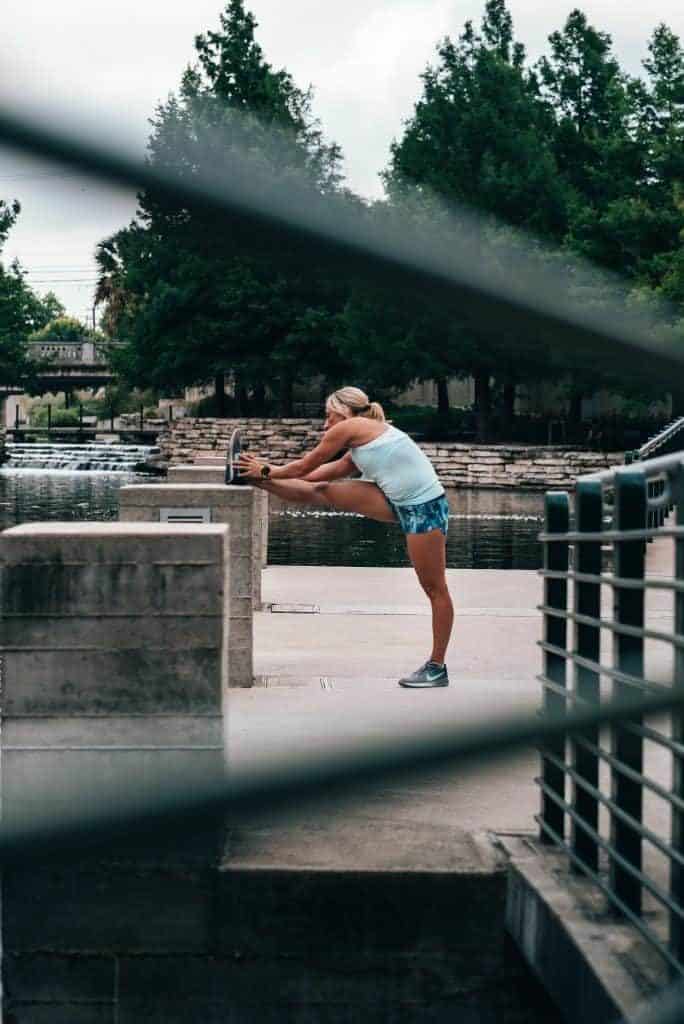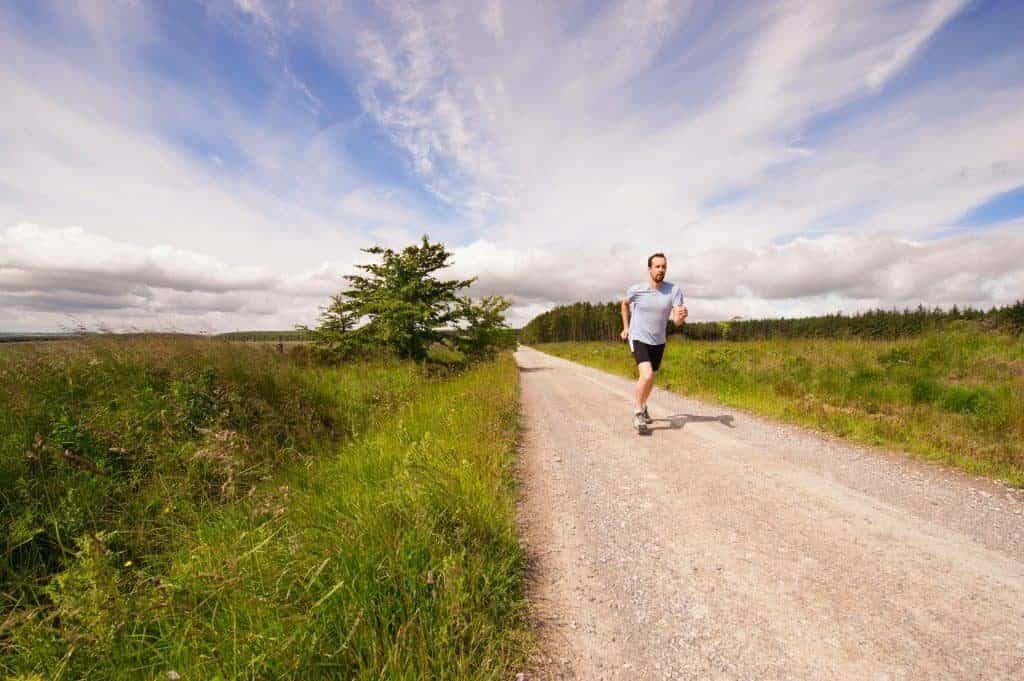Tight calves, calf strain, tendonitis. There are many different issues and annoying injuries that come with tight calves running. I know this because I am a long suffering runner who has struggled with this for some time.
Now before we go any further I just want to note that while stretching is important when it comes to calves it is not a fix all solution. Many guides will tell you that simply stretching before and after running fixes just about any problem with your calf muscles.
So is stretching important? Yes.
Is it going to solve all of your problems? No.
Now we have cleared that up lets dive a little deeper.
What causes Tight calves?

As with any exercise there is extended or repetitive stress placed on the muscle. This causes small tears in the muscle fibres which is normal and expected. The tightness you experience in the period after any exercise is your muscles contracting as the tears heal.
This is why we are often told to stretch to counteract this tightening of the muscle. So as I said above, yes stretching is absolutely an important part of the puzzle. Without stretching the muscle can essentially shorten, leading to a reduced range of motion.
How does this lead to injury?
So if the muscle is designed to breakdown and rebuild why do I get injured? I can hear you asking.
The reduced range of motion mentioned above means your calf is not as well able to deal with the strain you place on it during your next run. This results in a more serious tear or even a rupture which can be a very long term or even permanent injury.
In a lot of cases we also simply do not allow our body to recover properly. This can be as simple as lack of proper nutrition to feed the muscle, poor hydration or overuse. There are many reasons which can all contribute to an injury or strain.
Breaking down the type of calf strain
One thing that can be very helpful in figuring out what type of strain you have it timing. If you are training frequently it is not uncommon to feel tightness in your calf in between training sessions. By managing this with rest, stretching, staying hydrated and eating a balance diet you should be fine.
If you are in this group you should find that the tightness dissipates a short distance into your run as the muscle warms up. This is basically expected and normal and as long as you continue to manage it there should be no issues or injuries.
The one to watch out for
The second situation is when the tightness or strain occurs while you are actually running. This is quite different and if it is painful you should stop running. There can be quite a few different causes in this situation but it usually breaks down into two types.
- You slip or trip/misplace your foot. Anyone regardless of fitness level can for many reasons have their foot land incorrectly and therefore strain a muscle. This is your typical running injury caused by something like tripping on a kerb or uneven surface. If you feel pain you should stop and assess the situation before you continue. This could also be dehydration which can of course be avoided simply with sufficient water intake before, during and after your run.
- Deeper mechanical issues. Your body is a series of parts working like a machine. Increasingly many of us have issues with our biomechanics due to lifestyle or work situations. Things like constantly sitting, poor posture, weak glute muscles and so on can all have a domino effect on our legs and feet.

Dealing with a deeper problem
If you are in the second group here then you may have some work to do. A great way to check if there is an issues like this is to check the bottom of your running shoes. If they are worn more to one side then your foot is not striking the ground correctly and this is then transferring the impact up in into your ankle and leg increasing the stress and strain on your muscles.
This is known as Pronation and Supination depending on which way your leg is moving. Ideally you would be completely neutral and hit the ground perfectly helping to avoid most injuries.
I think I have an issue what do I do now?
Like any muscle issue there can be many variables and factors at work. If you are not an experienced runner it would be best to consult a professional such as a Physical Therapist or Strength & Conditioning coach.
They will be able to conduct an assessment to try to establish what the root cause and solution to your problem is.
Some common issues are:
- Lack of ankle mobility
- Weak muscle groups in the legs, glutes and lower back
- Issues with pelvic and hip alignment
Many of these can be solved by following corrective exercise programs which these professionals can assist you with. You may also want to consider activities which can aid in muscle tension release and recovery such as aerial yoga.
My pain is gone, is there anything else I need to do?
If you have successfully dealt with a strain or injury and are ready to get back out running it is worth taking a few steps to try to avoid recurrence of the injury. The calf is one of those muscles that for most of us is under constant strain. Therefore it is susceptible to recurring injury in a way that other muscles often are not.
A combination of strengthening exercises and regular stretching should improve your calf strength, mobility and maybe even improve your running times.
